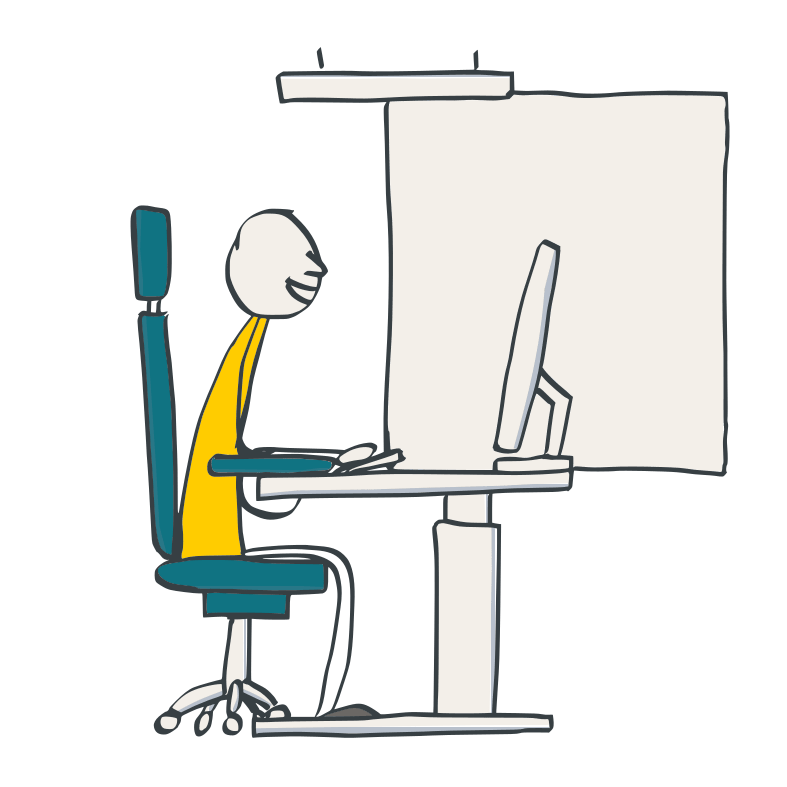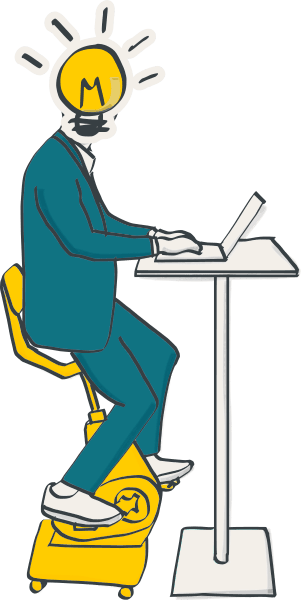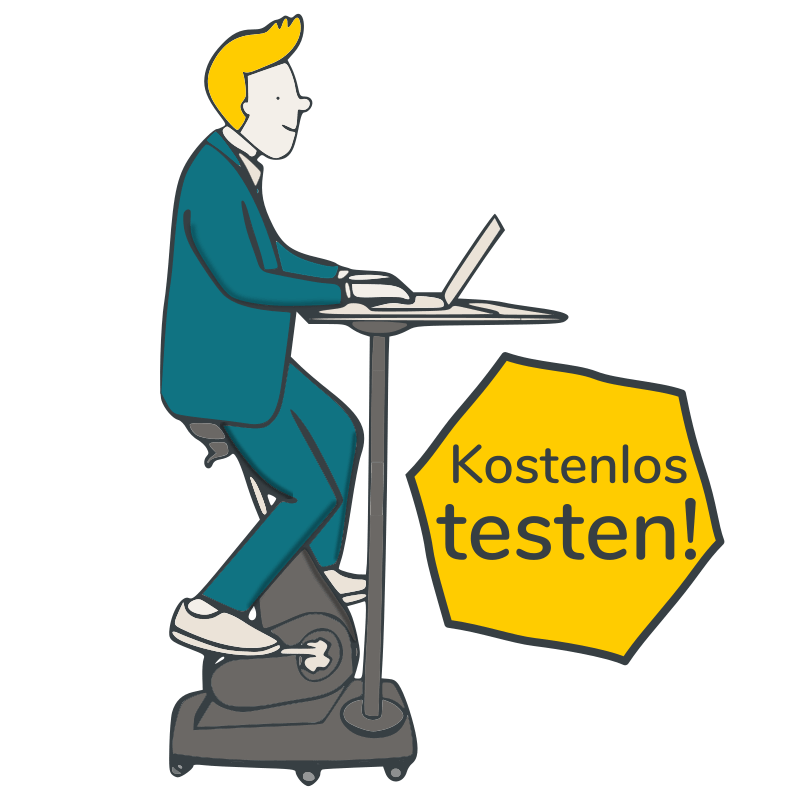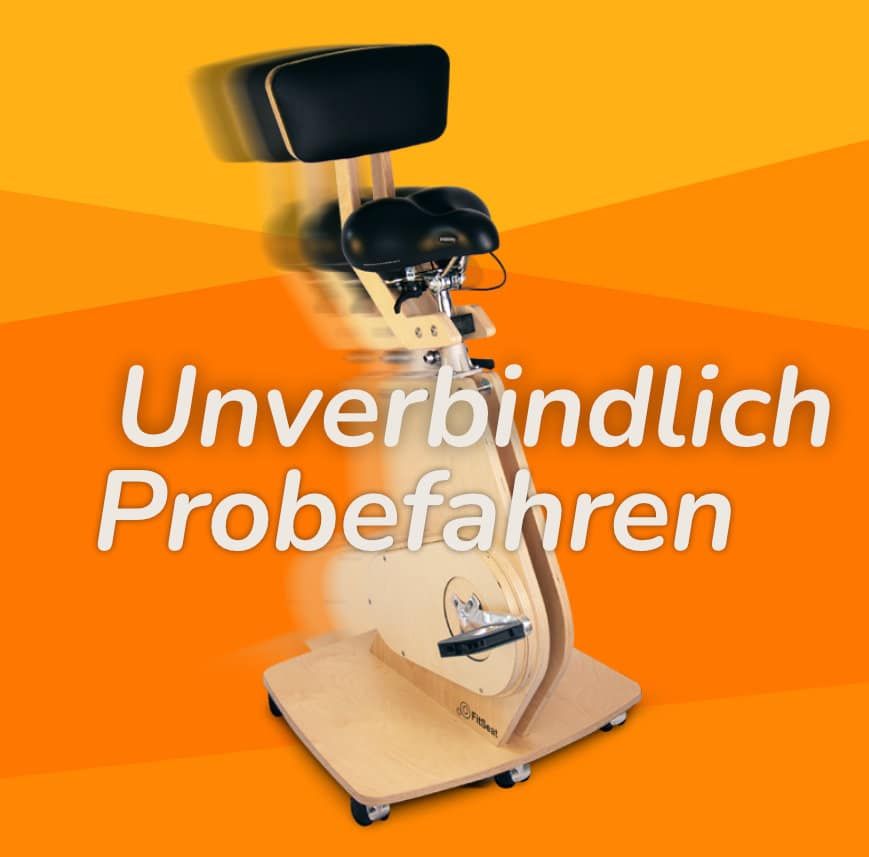FitSeat® Magazin
News | Blog| Insights
FitSeat® Magazin
News | Blog| Insights
FitSeat® Magazin
News | Topics | Insights
Fit and productive whilst working from home – how to succeed at the balancing act between work and family
Fit and productive whilst working from home – how to succeed at the balancing act between work and family

Working from home has become more topical than ever. Even professionals who have no experience working from home have had to come to terms with the new Corona-related working conditions.
Not only your own day needs to be structured and designed. Closed daycare centers and homeschooling also pose enormous challenges for working parents. Focused and productive work between a conference call with the boss and math problems for the next generation quickly becomes a balancing act that not everyone succeeds at straight away.
Focused work and a structured daily routine are the key ingredients to cope with everyday life between work and family, without neglecting either side.
Boost productivity while working from home – this is how it works
Working from the home office requires a lot of self-discipline, consistency and organizational talent. For some working people, it can be an attractive option to combine work and family and to spend more time together.
Others, on the other hand, perceive this additional burden as torture and longingly wait for the corona measures to be relaxed and for regular childcare operations to be resumed or to return to the office.

Preparation and structure
Good planning and productivity go hand in hand. Prepare for your work day by thinking about what you want to achieve.
Taking into account already fixed appointments and private obligations, you can create a rough structure for the day. Especially if you have to look after or supervise children at home at the same time, the daily schedule should include enough flexibility to be able to react to unforeseen events.
Regardless of whether it is a classic to-do list or creative chaos in the form of a mind map, it is always helpful if you create a “timetable” for how and when tasks should be completed.
From a psychological point of view, ticking off or crossing out completed tasks is an important aid to finish topics and maintain motivation.
When prioritizing tasks, you should ask yourself the following questions:
- What is the impact of doing this task – short term or long term?
- Is the task important?
- Is this task urgent?
Ideally, you can think about how you can keep your children busy in advance.
Tip: For smaller children you can prepare something to color or arts-and-crafts the day before During the pandemic, you can also use an audiobook or TV/Netflix series more than usual.
It is also advisable to inform those around you (spouse, partner, children) about when and for how long you have to work. This is the only way to ensure that you have peace and quiet when you need it.
Owl or lark? – Each of us has a different biorhythm and therefore different times of the day when they are most productive. You should therefore put tasks that require a high level of concentration in your personal “primetime”.
Distraction-free environment
Not everyone is fortunate enough to have a separate office at home where they can work undisturbed. It is not uncommon for the laptop to be opened on the couch or kitchen table.
Regardless of the conditions in your home, one principle always applies:
Make your workspace as distraction-free as possible.
If possible, withdraw as much as possible from everyday family life. If you have to work, the bedroom or the untidy attic can serve as an emergency office. From an ergonomic point of view, this shouldn’t be a permanent condition.
It is also important to remove or minimize any potential sources of distraction. Cell phones, iPads, etc. should be out of reach and all applications that are not necessary for work (Facebook, Instagram, WhatsApp) should be deactivated.
Avoid anything that prevents you from staying focused. If possible, close the door to your office or place of work. Close all browser windows and programs that are not needed for your current task. Your e-mails (and certainly not your private ones) don’t have to be checked every 5 minutes.


Breaks and exercise
Concentration decreases disproportionately during longer periods without a break. This not only affects your concentration, but also your motivation. It is all the more important that you take regular breaks. A rule of thumb is that you should take a short break every 60-80 minutes at the latest.
During the breaks, you can now do everything that you enjoy or that needs to be done. The idea is to distract yourself from your actual task. You should also set a fixed time frame for your breaks in order to avoid long breaks.
At best, you also use the breaks for exercise. Sitting for long periods of time and a lack of exercise have negative effects on our entire body. The intervertebral discs are stressed, the blood circulation and the oxygen supply to the organs are impaired, and the body quickly becomes tired and it becomes difficult to concentrate.
Only a few have an ergonomically designed workplace including a large table and high-quality office chair at home.
Not everyone can enjoy the advantages of a FitSeat, which encourages movement while working and thus activates the cardiovascular system. It is all the more important to integrate as much exercise as possible into everyday work.
Avoid long sitting times to stay healthy and productive
The best way to counteract the consequences of long sitting is by incorporating movement routines into the structure of your working day:
- Start with a short morning workout before you go to work. Apps like Freeletics can help you if you don’t know which exercises to start with.
- Change your work position as often as possible. Get up and walk around when you are on the phone.
- Take a short walk during your lunch break or walk up and down the stairs.
- Move in between working periods. A few squats or the “foot swing” under the table get your muscles and circulation going.
- Exercise after work. An extended evening run or some strength exercises ensure that you can clear your head and start the evening in a relaxed way.
No question about it, Corona and the work situations associated with it are a great challenge for many. With a little structure and discipline, however, it is possible to make the most of the given circumstances and to work productively from home while staying fit. Let us all hope that the health crisis will soon change and that something normal will return to our daily working life.
Until then, stay fit and healthy!
Dennis
About the Author:
Dennis Wittmann is a passionate father, project manager and part-time editor of the websitessimple-bikepacking.de and bikepackingtaschen.de.. A structured way of working is essential in order to be able to reconcile professional obligations, family and leisure time. In this guest article, Dennis gives us some tips and tricks on how to work from home in a focused manner.
Questionnaire – How do you keep fit and stay productive while working from home?
These were our tips for being fit and productive while working from home. We are very interested in how you are currently dealing with the situation. Please answer the following questions:


